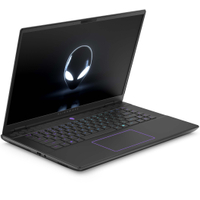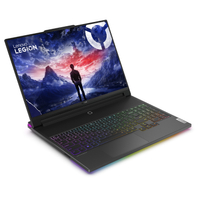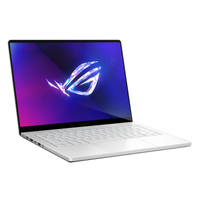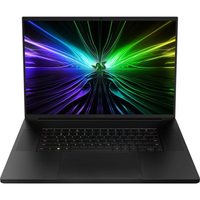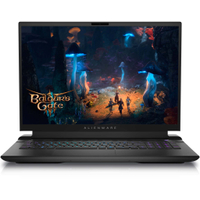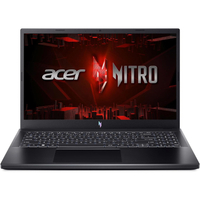The best gaming laptops we've tested will change the way you play
From budget PCs to high-end systems for enthusiasts, there's a great gaming laptop for everyone.
As technology continues to evolve, gaming laptops creep closer to the performance and overall experience that, traditionally, you would only get from a purpose-built desktop PC. Out of all the gaming laptops tested at Windows Central, Alienware's m16 R2 is the top pick thanks to its impressive selection of performance hardware, sleek and premium design, and high-end 16-inch display. At the time of writing the latest update, introductory models with a Core Ultra 7 and RTX 4060 are down to $1,600 at Dell.
Not for you? No problem. The expert reviewers at Windows Central offer many high-rated gaming laptop alternatives to check out, including more affordable options, different sizes, and many different brands.
Recent updates
February 7, 2025: These picks continue to represent the best gaming laptops tested and reviewed at Windows Central. I've noted where new 2025 models are expected in the near future. — Cale Hunt
The quick list
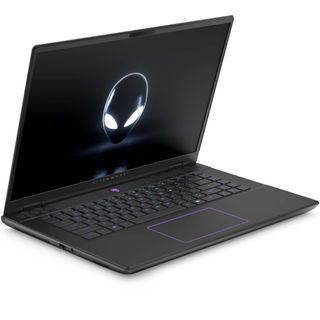
Best overall
Dell's Alienware m16 R2 is our top pick for most people, hitting the 16-inch sweet spot for gaming laptops while offering impressive performance and a 240Hz QHD+ display at a competitive price.
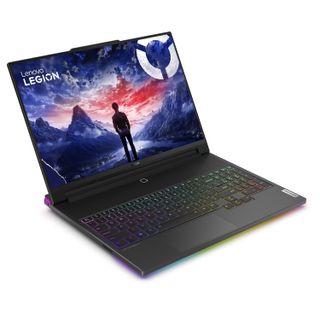
Premium pick
Lenovo's Legion 9i comes with a brilliant mini-LED display with 165Hz refresh rate, 14th Gen Intel Core i9 CPU, and up to a NVIDIA RTX 4090 Laptop GPU. It's brimming with features, and it's ready to fully replace your desktop gaming PC.
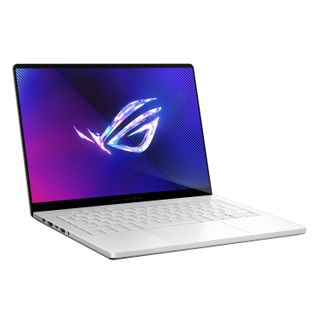
Best compact
The best 14-inch gaming laptop right now is the ASUS ROG Zephyrus G14 (2024), and it's perfect for those who prefer to travel light. Its sleek aluminum chassis is packed with high-end features, and it has the power to keep up with all modern titles.

Best for creators
Razer's Blade 18 for 2024 remains a premium oversized laptop for work and for play. It comes in a couple of high-end display options, and it's powered by up to a Core i9-14900HX CPU and NVIDIA RTX 4090 Laptop GPU. It's not very portable, but it's an effective desktop replacement.
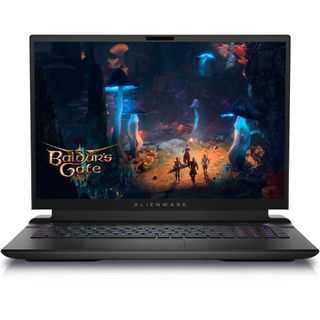
Best 18-inch
Oversized gaming laptops are perfect for those who can't quite decide between a laptop and a desktop for PC gaming. The Alienware m18 R2 delivers up to an Intel Core i9-14900HX CPU and NVIDIA RTX 4090 Laptop GPU, with an 18-inch QHD+ display option at 165Hz.
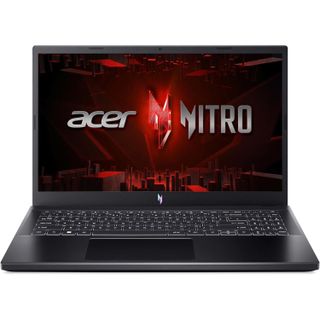
Best value
Acer's Nitro V is a laptop I've used in the past, and today it remains a top option if you want to spend less than $1,000. The model I suggest has a Core i7-13620H CPU, NVIDIA RTX 4060 Laptop GPU, and 15.6-inch FHD display at a 144Hz refresh rate. It lacks some high-end features, but it'll handle your favorite games.

I spend way too much time gaming on desktop and laptop PCs, and when I'm not having some fun I'm usually testing or writing about the same subject. My own decades of experience combined with the expert reviews on Windows Central allows me to give informed buying advice to help you land the perfect gaming laptop.
Best overall gaming laptop
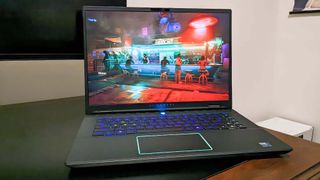
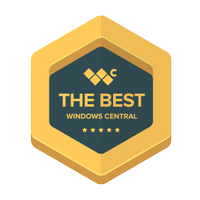
Specifications
Reasons to buy
Reasons to avoid
My recommended Alienware m16 R2 configuration:
Core Ultra 7 155H | RTX 4060L | 16GB RAM | 1TB SSD
The Alienware m16 R2 with Core Ultra 7 155H CPU, RTX 4060 Laptop GPU, 16GB of RAM, and 1TB SSD should be great for most gamers. You can always upgrade the RAM and SSD after purchase, and you can always opt for the RTX 4070 if you want higher framerates.
The Windows Central team reviews a ton of gaming laptops every year, and it seems like the Alienware m16 R2 struck a certain note for Editor Rebecca Spear. In her Alienware m16 R2 review, she said:
"Its performance and how long the battery can last when running average office programs thoroughly impressed me. For this reason, the laptop will serve you well if you need to use it for work, school, and video games."
The only major downsides are fan noise — something common in gaming laptops due to the power inside — and display brightness topping out at about 308 nits (as tested). There's no OLED panel available, but the IPS display is impressive. It has a 2560x1600 (QHD+) resolution, 240Hz refresh rate, 3ms response time, and NVIDIA G-Sync support. In our testing, it hit 99% sRGB, 79% AdobeRGB, and 81% DCI-P3 color reproduction.
The laptop is packed with ports, including Ethernet for a wired internet connection, and all RGB lighting for the keyboard and chassis is customizable. Looking at performance hardware, Dell offers a decent range of options with up to an NVIDIA RTX 4070 Laptop graphics card (GPU) and Intel Core Ultra 9 185H processor (CPU). The RAM and SSD are both upgradeable after purchase.
Prices normally start at about $1,600 for models with the impressive QHD+ 240Hz display, and there's plenty of opportunity to spec up as your budget allows.
Dell doesn't plan on refreshing the Alienware m16 R2, but keep an eye out for the new Area-51 laptops expected to launch in Q1 2025.
👀 Read our full Alienware m16 R2 review
Best premium gaming laptop
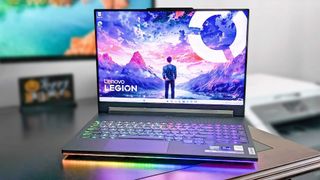

2. Lenovo Legion 9i (Gen 9)
Specifications
Reasons to buy
Reasons to avoid
My recommended Lenovo Legion 9i (Gen 9) configuration:
i9-14900HX | RTX 4090L | 32GB RAM | 1TB SSD
The Legion 9i (Gen 9) at this time comes standard with the 14th Gen i9-14900HX CPU and an RTX 4090 Laptop GPU. RAM and SSD can be upgraded after purchase to save you money at checkout.
Lenovo is often quick to update its premium gaming laptops, and it has now released the Legion 9i (Gen 9.) Not long after, we got our hands on the eighth-gen model for testing. The takeaway when looking at the Gen 8 and Gen 9 models is that the newer version really hasn't changed physically, with Lenovo updating the CPUs from 13th Gen to 14th Gen Intel instead of a full overhaul.
With this in mind, we can still glean some important info from our Lenovo Legion 9i (Gen 8) review. Windows Central's Rebecca Spear gave it a Windows Central Best Award, noting:
"It can easily handle demanding ultra graphics settings in the latest video games while providing smooth gameplay and a steady frame rate of around 60 FPS."
Battery life isn't particularly impressive due to the available power and display, but that's expected in a gaming laptop. Speaking of the 16-inch display, it's one of the best around if you're interested in mini-LED tech. It comes with a 3200x2000 (3.2K) resolution, anti-glare finish, 165Hz refresh rate, Dolby Vision, DisplayHDR 1000, G-Sync, Advanced Optimus, and 1,536 local dimming zones for the mini-LEDs. We tested nearly 700 nits brightness in SDR mode, making it one of the best laptops with bright screens.
Lenovo offers a 14th Gen Intel Core i9-14900HX CPU and up to an NVIDIA RTX 4090 Laptop GPU with this laptop. The DDR5 RAM and M.2 SSD are upgradeable, so you can save some money at checkout and upgrade the components later when you find a good deal.
👀 Read our full Lenovo Legion 9i (Gen 8) review
Best compact gaming laptop
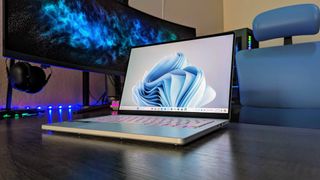

Specifications
Reasons to buy
Reasons to avoid
My recommended ASUS ROG Zephyrus G14 (2024) configuration:
Ryzen 9 8945HS | RTX 4060 | 16GB RAM | 1TB SSD
A config with these specs will deliver a stellar gaming experience for a lot of people, and it even comes with a 3K OLED display at 120Hz. Best Buy frequently has this model discounted by hundreds of dollars.
ASUS gave its ROG Zephyrus G14 a massive overhaul for 2024, and it has turned the laptop into the best 14-inch gaming option on the market today. If you want to travel light (even more so than with the Blade 14) but hold onto high-end features and performance, it should be the right choice.
In their ASUS ROG Zephyrus G14 (2024) review, Windows Central's Zachary Boddy said:
"ASUS set out to perfect its 14-inch gaming laptop and kissed the feet of sublimity with the latest version."
That's high praise from someone who tests and reviews so many laptops every year. The laptop is slim and sleek with a sturdy aluminum chassis, the RGB keyboard and touchpad are comfortable, and there are six speakers with 10W output. There's even an IR sensor to go along with the 1080p webcam.
The 14-inch display uses an OLED panel for impressive color and contrast, and it has a 2880x1800 resolution, 120Hz refresh rate, 0.2ms response time, NVIDIA G-Sync and Advanced Optimus, MUX switch, and Dolby Vision support. It's practically everything you want in a gaming display.
Gaming performance is handled by an AMD Ryzen 9 8945HS CPU, NVIDIA RTX 4050, 4060, or 4070 Laptop GPU, LPDDR5x RAM (soldered), and up to a 1TB M.2 PCIe 4.0 NVMe SSD. Battery life isn't great when gaming, but we did see about six hours of runtime with regular non-gaming usage.
Note that updated models containing NVIDIA's new RTX 5000 GPUs are expected to launch in February. For an AMD Ryzen AI 9 HX 370 and RTX 5070 Ti Laptop GPU, expect to pay about $2,200.
👀 Read our full ASUS ROG Zephyrus G14 (2024) review
Best for creators
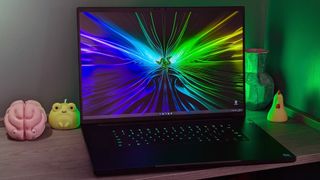

Specifications
Reasons to buy
Reasons to avoid
My recommended Razer Blade 18 (2024) configuration:
Core i9-14900HX | RTX 4070 | 32GB RAM | 1TB SSD
Razer's Blade 18 for 2024 comes with Intel's Core i9-14900HX CPU by default, and it pairs very well with an RTX 4070 for a high-quality gaming and creation experience. A QHD+ mini-LED display at 300Hz is outstanding.
The Blade 18 for 2024 has some strong competition from Alienware's 18-inch gaming laptops, but it remains a top option for gamers and creators who want a sleek design, plenty of high-end features, and incredible performance.
In Senior Editor Ben Wilson's Razer Blade 18 (2024) review, he stated:
"Razer sticks to its plans with the monstrous Blade 18 and doesn't change the fundamental design for its 2024 refresh. Instead, it makes incremental improvements and delivers an ultra-powerful 14th Gen Intel HX processor with the latest Wi-Fi 7 tech and Thunderbolt 5 USB-C standard. The RTX 4090 inside is still the most powerful GPU you can get in a laptop, and it performs best in the Blade 18 (2024) with zero issues running any game you can think of. It'll cost you a fortune, but Razer isn't ripping you off — it's still the best gaming laptop in the world."
It's a laptop designed to work in any situation, with a decent selection of ports, a superb keyboard and touchpad, a 5MP webcam with IR sensor and privacy shutter, and top-firing speakers.
Its 18-inch display is a certain highlight. It primarily comes in a QHD+ resolution with a 240Hz refresh rate, but you can upgrade to mini-LED with a 300Hz refresh rate for incredible color and contrast. It's the right choice for creators.
Battery life isn't great and the fans get very loud due to the performance hardware inside, but it's a true desktop replacement for those who prefer to remain mobile.
👀 Read our full Razer Blade 18 (2024) review
Best 18-inch gaming laptop
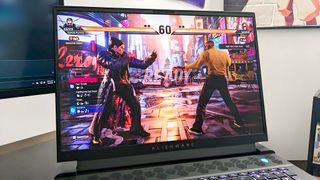

Specifications
Reasons to buy
Reasons to avoid
My recommended Alienware m18 R2 configuration:
Core i7-14700HX | RTX 4070 | 16GB RAM | 1TB SSD
Dell offers plenty of configuration options, but this model with an i7-14700HX CPU and RTX 4070 Laptop GPU should be a great fit for most people. RAM and SSD are upgradeable after purchase if you'd like to save some money at checkout.
I named the Alienware m16 R2 the best overall gaming laptop for most people, but Dell's lineup includes so much more. We also reviewed the Alienware m18 R2, with Rebecca Spear handing it a Windows Central Best Award thanks mostly to its stellar mechanical keyboard with number pad, gorgeous display, and strong performance.
This isn't a laptop you want to buy if you often game while on the go. It weighs in starting at 9.32 pounds (4.23kg), with a thick thermal bar along the back and an overall futuristic look to house the performance hardware. It's essentially a desktop in a laptop format, and for some people, that's the go-to move.
The 18-inch display comes in 2560x1600 (QHD+) or 1920x1200 (FHD+) flavors; we tested the former in our review. The QHD+ option has a 3ms response time, variable 165Hz refresh rate, and NVIDIA G-Sync support. In our testing, it managed about 311 nits brightness, hitting 100% sRGB, 90% AdobeRGB, and 100% DCI-P3 color reproduction.
The oversized chassis allows for some impressive performance hardware. You can go all the way up to a Core i9-14900HX CPU, RTX 4090 Laptop GPU, 64GB of upgradeable DDR5 RAM, and up to 8TB of M.2 PCIe 4.0 NVMe SSD storage split across two drives. Battery life is a weak spot, with the laptop lasting just 2.5 hours, even without running games. Considering its bulk, you won't likely be far from a desk, allowing you to keep it plugged in for maximum performance.
Like its smaller sibling, the Alienware m18 R2 isn't expected to get a refresh. Instead, it will soon be replaced by an 18-inch Area-51 gaming laptop. Watch for them in Q1 2025.
👀 Read our full Alienware m18 R2 review
Best value gaming laptop
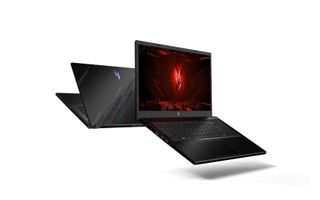
6. Acer Nitro V (ANV15)
Specifications
Reasons to buy
Reasons to avoid
My recommended Acer Nitro V 15 configuration:
Core i7-13620H | RTX 4060 | 16GB DDR5 | 512B SSD
This model available at Best Buy is often available for far less than $1,000, making it a great choice for casual and new gamers who are just getting into the PC world.
Although I haven't reviewed this specific Acer Nitro model, I have tested older versions and come out the other side with an overall positive opinion. Acer didn't design this gaming laptop to compete with the heavy hitters; instead, it balances price, performance, and features to arrive at a cost that is usually far less than $1,000.
The model I'm highlighting, on sale at the time of writing for $800, includes a 13th Gen Intel Core i7-13620H CPU, NVIDIA RTX 4060 Laptop GPU, 16GB of DDR5 RAM, and a 512GB M.2 PCIe 4.0 NVMe SSD. The storage and memory can be upgraded after purchase.
The CPU/GPU combo here is a great match for the 15.6-inch display. It has a 1920x1080 (FHD) resolution and a 144Hz refresh rate, allowing the system to raise frame rates further than with a QHD display.
Extra features might be lacking — like the 720p webcam and average speakers — but the system has lots of ports and a full keyboard with a number pad. If you'd like to step into PC gaming on the cheap, this is a great option.
Choosing the best gaming laptop
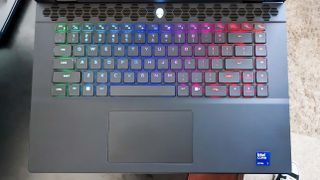

Buying a gaming laptop makes a lot of sense. A desktop PC is glued to one location, while a gaming laptop can go anywhere you go. For the majority of gamers, the performance from today's best gaming laptops is so good that you won't miss having a desktop, either.
My top pick, based on a combination of review score, performance hardware, design, and pricing, is the Alienware m16 R2. While it usually starts at about $1,500, frequent discounts drop it often to as low as $1,200. That's a great price for a Core Ultra 7 CPU, RTX 4060 Laptop GPU, and QHD+ display with 240Hz refresh rate. Dell also has the Alienware x16 R2 that we reviewed if you'd like something with a more premium appeal.
Lenovo's Legion 9i (Gen 9) and Razer Blade 18 are both premium laptops with a high price, but they're ideal for enthusiasts, designers, and creators who need desktop-class performance in a mobile platform. You can also check out the ASUS ROG Strix SCAR 18 we reviewed if Lenovo and Razer don't do it for you.
Want to spend less than $1,000? The Acer Nitro V 15 has long been a top choice in the budget market, allowing you to get an RTX 4060 Laptop GPU and 144Hz display for a lot less.
Handheld PCs: The gaming laptop alternative
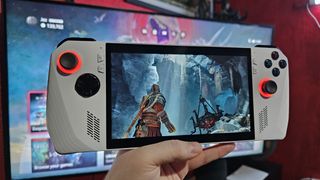
The best gaming handhelds are finally becoming a viable alternative to carrying around a gaming laptop if your priorities are to, well, game. They're purposely designed to be a console-like experience but able to play your PC games on the go. With the added bonus of costing less than most good gaming laptops.
What you lose, of course, is a built-in keyboard and a display big enough to do anything resembling work on. But make no mistake, these portable PCs can be hooked up to an external display, a mouse, and a keyboard, and you have yourself a fully capable PC that can also fit in (some) pockets.
There are two handheld PCs that we can easily recommend right now if you're interested in going this route over a traditional gaming laptop.
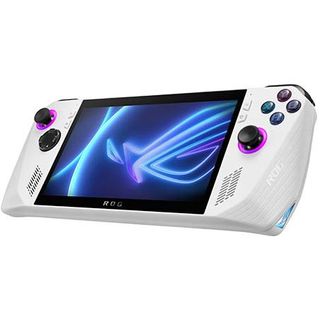
This gaming handheld runs Windows 11 Home and can be used to access several gaming services and storefronts. It's far more powerful than the Steam Deck for those who need a bit more juice for their favorite modern games.
Buy at: Best Buy | Amazon | Currys (UK)
The ASUS ROG Ally is the first Windows-powered handheld gaming PC that's truly worthy of recommendation. There have been a number of such devices prior, but all have had big reasons to avoid, be that performance or, more often, price.
The ROG Ally isn't extortionately expensive and it's also a strong performer. It uses AMD's new Z1 Extreme APU which is designed specifically for this type of device. Toss in 16GB of RAM, a super-fast PCIe 4.0 SSD and a gorgeous 1080p 120Hz display, there really is nothing like the ROG Ally right now.
It isn't perfect, but as a package, it's extremely compelling. Running Windows 11 means no game compatibility issues, all anti-cheat systems work fine, and its hardware can play even today's more demanding games well.
Have a look at our ASUS ROG Ally review for a lot more information.
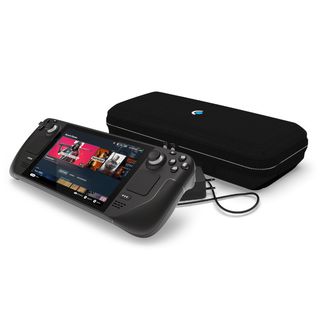
The Steam Deck is a brilliantly designed and remarkably capable portable gaming device that redefines the way players can enjoy their Steam libraries. It's a great choice for anyone with a massive amount of Steam games, and it can also do so much more with a little tweaking.
Buy at: Steam
The Steam Deck is what really started the handheld gaming PC boom, despite not actually being the first of its kind. But the Steam Deck has captured the imagination of gamers worldwide. It doesn't run Windows, instead using SteamOS, a customized version of Linux built by Valve. But for the most part, this doesn't interfere with gaming, as its Proton compatibility layer does an excellent job of translating Windows games.
The Steam Deck has price on its side for sure, as well as its hooks into Steam, the largest PC games platform on the planet. Not running on Windows also allowed Valve to design a custom user experience better suited to handheld use.
It isn't as powerful as the ROG Ally, but it's no slouch, using its own custom AMD APU, 16GB of RAM and PCIe 4.0 storage unless you get the base model. It's highly repairable and customizable, and there's a thriving market of accessories for the Godfather of the current handheld PC market.
Be sure to read our Steam Deck review for much more information about the device.
How we test gaming laptops
It won't come as a surprise that most of our testing process for gaming laptops primarily relies on stress testing a series of AAA games. Specific titles, like Far Cry 6, Cyberpunk 2077, and Shadow of the Tomb Raider, have built-in benchmarking modes that simulate various moments of intense CPU and GPU utilization, which can be analyzed afterward to see which settings make the most impact.
Of course, we run each model through a gauntlet of broader tests to see which components are worth the cash. Some high-end parts might sound great on paper, but if they're housed inside a gaming laptop that hasn't been adequately optimized for cooling, they'll likely suffer from performance throttling to prevent overheating. King of the castle in every respect, the Razer Blade 18 is a loud machine when it's under stress, but the vapor chamber cooling system keeps its hardware nice and cool.
Compared to pre-built gaming desktop PCs, the laptop equivalents are often short in raw performance numbers, despite displaying the same model numbers as their full-size companions. A laptop variant of the NVIDIA GeForce RTX 4090 won't perform as well as its desktop version. Still, each gaming laptop is compared against those in its category and beyond, so we'll always provide benchmark graphs to show how each performs in testing.
Picking up a gaming laptop won't net you the same across-the-board performance as the best Windows laptops, notably taking the biggest hits in the battery department. Still, thanks to the dedicated GPUs, they generally double up as excellent choices for creative types, pushing for faster video rendering and real-time image editing.
Get the Windows Central Newsletter
All the latest news, reviews, and guides for Windows and Xbox diehards.

Cale Hunt brings to Windows Central more than eight years of experience writing about laptops, PCs, accessories, games, and beyond. If it runs Windows or in some way complements the hardware, there’s a good chance he knows about it, has written about it, or is already busy testing it.
- Rebecca SpearGaming and News Editor
- Ben WilsonSenior Editor
- Richard DevineManaging Editor - Tech, Reviews
